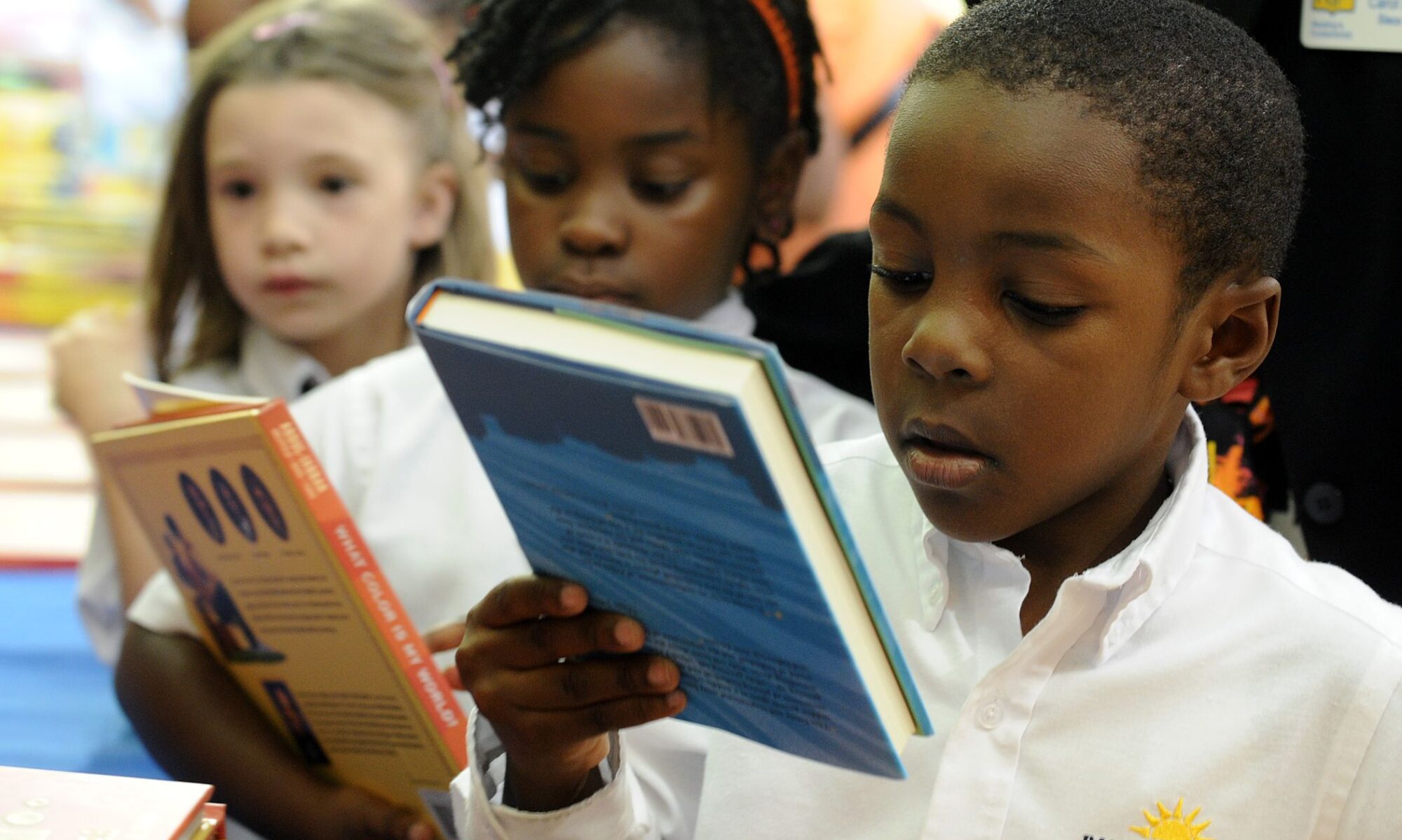Women’s History Month Activities
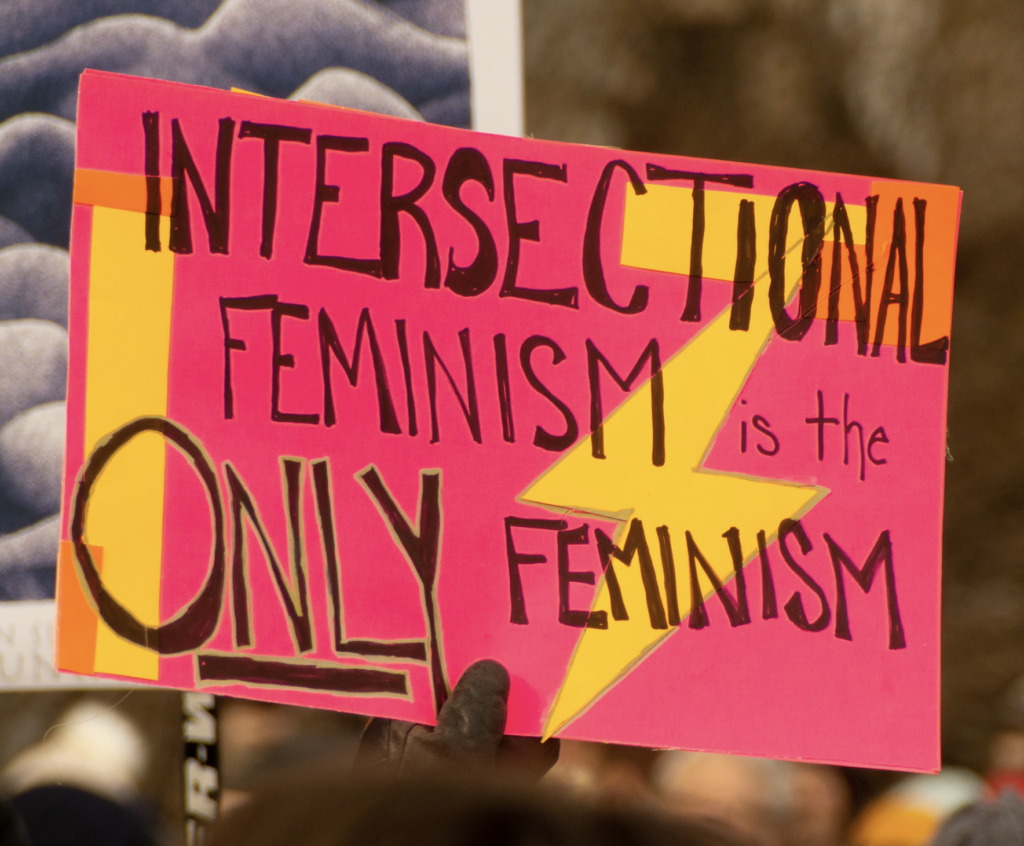
Table of Contents
Make a Living & Growing Group Portrait
Making a Self-Portrait Collage
Multicultural Identity Self-Portrait
Women & Environmental Activism
Hidden Figures Movie Showing
Age: Grades 4-12
Objective: To learn more about Black women who excelled in engineering, science and math and changed history.
Directions: Watch Hidden Figures: The True Story of Four Black Women and the Space Race.

Source: https://www.waterford.org/resources/activities-to-celebrate-womens-history-month/
Interview an Important Woman
Age: K-5
Objective: For students to learn more about the women in their lives and build informal interviewing skills.
Directions: Invite students to identify a woman in their life that they look up to (mom, grandmother, teacher, neighbor, etc.) and interview them, using a list of questions students and instructors brainstorm together (if students cannot read or write, ask that the interviewee completes the interview notes). The next day, ask students to share out with the group about their interviews.
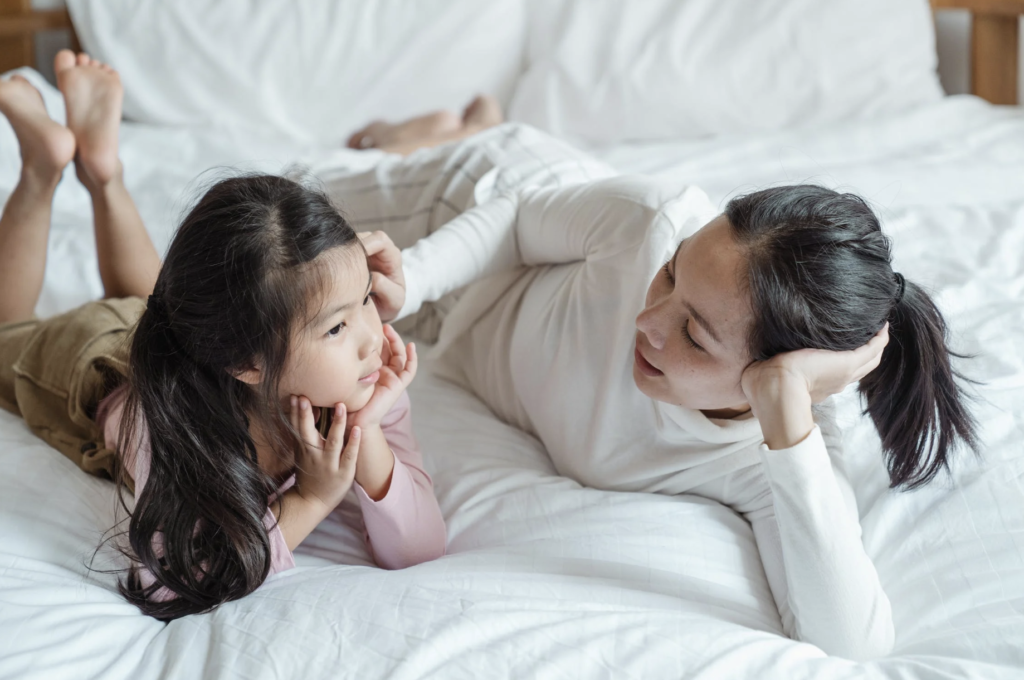
Source: https://www.waterford.org/resources/activities-to-celebrate-womens-history-month/
Mae Jemison Craft Activity
Age: K-5
Objectives: Learn about the first Black woman to go to space, Mae Jemison, and create an astronaut helmet craft!
Directions:
Watch the following video: https://www.youtube.com/watch?v=rvUfEQV7XfI
Follow the directions below:
- “Using your small bucket as a form, cover it with one layer of aluminum foil.
- Tape pieces of packing foam around the bottom portion of the helmet to create a support around 3 of the 4 sides of the helmet. You can leave one side open for the face opening.
- Cover the top and 3 sides with packing pillows secured with duct tape.
- Cover the packing foam and air pillows with another layer of aluminum foil and secure with clear tape.
- Cut a face opening on one side of the helmet to create the “front” of your helmet.
- Add another layer of packing foam all the way around the bottom of the helmet to create the “collar” portion.
- Cover the entire helmet with a couple more layers of aluminum foil to secure all the pieces together.
- Add your own personal details such as a NASA logo, American flag, etc. We also attached a broken piece of a headset as a microphone.
- For the final fitting, try the helmet on your child. For a better fit on our helmet, I popped a few of the air pillows from the inside with the tip of my scissors to allow more space for the helmet to fit lower on the head. The outer portion of the pillows retained the helmet shape, yet allowed more headroom inside the helmet.”

Source: https://www.woojr.com/create-sally-ride-inspired-astronaut-helmet/
Make a Living & Growing Group Portrait
Age: Grades K-5
Objectives: Learn about artist Frida Kahlo and how art can support cultural heritage.
Directions: “Show the students The Love Embrace/Roots by Frida Kahlo: https://www.fridakahlo.org/roots.jsp . Then, create a group portrait by: “choos[ing] a small garden area at school or else find pots for the play area/assembly hall/foyer welcome area. As a group, choose and plant a range of seeds, flowers, plants or vegetables according to the season and what is feasible! If it is possible to have a small planted area or garden you might want to expand your ideas to perhaps making a group portrait with each child choosing favourite colours or types of plant. You might want to be inspired by dominant colours in Kahlo’s work, for example green, red, yellow/gold. Possible plants or vegetables to include could be:
- Salad rocket (quick and easy to harvest)
- Poppies (with the added bonus of our connotations of memory)
- Sunflowers
- Runner beans
With many parents interested in plants, growing vegetables or perhaps renting allotments, this could also be an opportunity to bring in a multicultural dimension through the range of seeds chosen, for example types of okra, squash or spinach. Build into your growing and harvesting an opportunity to paint and cook the resulting feast, with an invited audience of parents, friends, colleagues etc! Watching the initial stages, and then drawing, writing and recording these creative growth stages can all be documented in sketchbooks.”

Source: https://www.tate.org.uk/documents/175/kahlo_tp.pdf
Making Mood Masks
Age: Grades K-5
Objectives: Introduce the idea of cultural identity and encourage the cultivation of art skills and creativity
Directions: Show the students Two Fridas by Frida Kahlo here: https://www.kahlo.org/two-fridas/
Then, “looking at the painting of Frida and Diego, introduce the idea of how we behave differently, depending on our relationships with other people, (for example how we are with our friend is different than with one’s manager, teacher etc). Ask the group to notice the body language of both Frida and Diego in the portrait of 1931. How do we think Frida might have been feeling? What do we look like when we feel shy or not very confident or are trying some new skill? If appropriate to the age of the group, then look at ‘The Two Fridas’ and discuss why she has shown herself twice, what are the differences in her clothes and what she is doing. A simple mask-making activity can explore this idea of how we contain a mix of feelings in one person. Ask the group to identify a range of feelings which they have experienced in the last week (for example, shy/confident/happy/sad/angry/calm). Brainstorm colors or shapes that could describe both these moods and the opposite feelings. You might want to look at the background of stormy clouds that Frida Kahlo chose for her double self-portrait as an idea to help with this. To make the masks, either use flat card on an ice-lolly stick to give a front and back shape or papier-mâché on a balloon which is then dried and the balloon form carefully cut in half to give a front and back. In either case ask the group to draw a sketch in advance of what colors or shapes will express a mood and the opposite feeling. It may be appropriate to display or present these masks as part of an assembly or performance.”
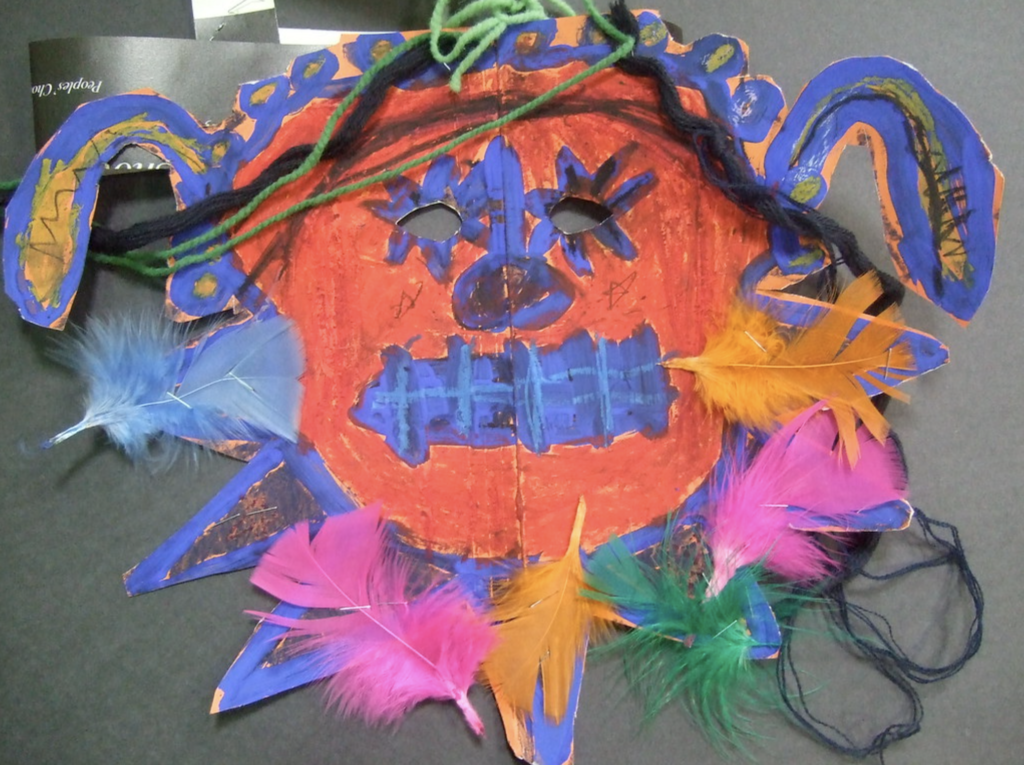
Source: https://www.tate.org.uk/documents/175/kahlo_tp.pdf
Making a Self-Portrait Collage
Age: Grades K-5
Objectives: Cultivate youth creativity while building student identity awareness.
Directions: Show the students Self-Portrait with a Monkey by Frida Kahlo here: https://buffaloakg.org/artworks/1966910-self-portrait-monkey
Then, “discuss Kahlo’s choice of jewelry in this painting and in her other selfportraits. Notice her choice of animals, birds or wildlife in her self-portraits and what these choices say about her as a person. Brainstorm the favourite jewellery, food and animals of class members. Decide if any of these are safe to bring to school! If not, ask students to draw favourite items at home and bring to school to incorporate in their own self-portrait. Perhaps this selfportrait will change according to the seasons, for example a student may choose to show themselves encircled by mangoes in the summer season and a favourite cap/jacket/scarf in the winter. What makes each of the group special in their choices of jewellery, food or animals to accompany their self-portrait? Discuss with the group the use of collage (perhaps pictures of animals) as a means of building up this self-portrait, giving layers to the self-image.”
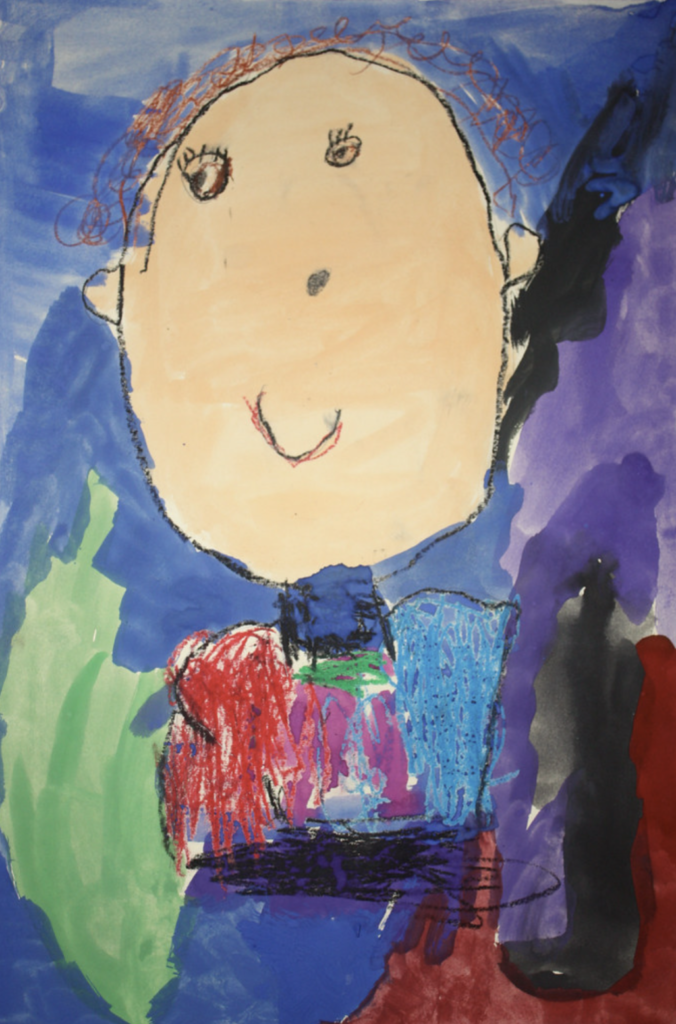
Source: https://www.tate.org.uk/documents/175/kahlo_tp.pdf
Multicultural Identity Self-Portrait
Age: Grades 6-8
Objectives: Cultivate youth creativity while building student identity awareness.
Directions: Show the students Self-Portrait with a Monkey by Frida Kahlo here: https://buffaloakg.org/artworks/1966910-self-portrait-monkey
Then: “Ask the students to consider the choices made by Kahlo in showing herself and also her own cultural identity. How can students express their own identity? For example this may be through a choice of Yoruba fabric in their portrait, the use of Jamaican colours or the inclusion of a Sikh bracelet. Remember that Kahlo’s father was German and her mother Mexican so she was making sense of many mixed cultural identities in her own artwork. As a woman with a disability she also wanted to represent herself in strong, visible ways when at times she felt vulnerable and invisible. Brainstorm a list of favourite food, music or colours as the start to representing oneself. Then look at how she places herself centrally, surrounded by these other choices and aspects that represent her. Ask the students to choose how to place themselves in relation to their selected favourites. These choices could surround the portrait, but also offer the possibility that the self-portrait could be a piece of writing or music, rather than a painting. Kahlo often used popular culture in her own work, ranging from current local songs to traditional Mexican sayings or using Day of the Dead skeleton imagery to create a contrast to the vitality and colour of her paintings.”

Source: https://www.tate.org.uk/documents/175/kahlo_tp.pdf
Poetry Slam
Age: Grades 6-12
Objectives: Learn more about the rich history of women of color poets and encourage students to write and present their own poems.
Directions: Read a short selection of poems (particularly poems written by women of color) and invite students to write their own poem. At the end of the session, hold a “BGCH Poetry Slam” where students and families are invited to hear the students’ poems.
Poems suggestions:
Phenomenal Woman by Maya Angelou
what’s the greatest lesson a woman should learn? By Rupi Kaur
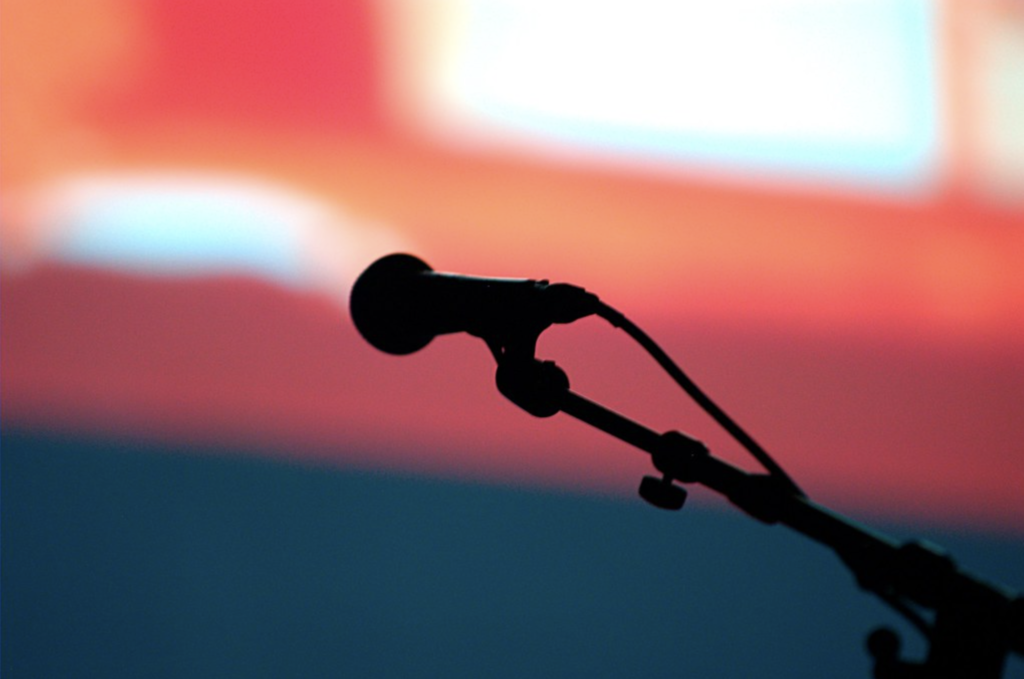
Source: BGCH team
Women & Environmental Activism
Age: Grades 8-12
Objective: Build critical consciousness by learning about how Black and Brown female activists have advanced environmental justice advocacy.
Directions: Watch the following mini-documentary:
https://www.youtube.com/watch?v=xfNjzpj4iTE
Create an issue tree on climate change using the following directions:
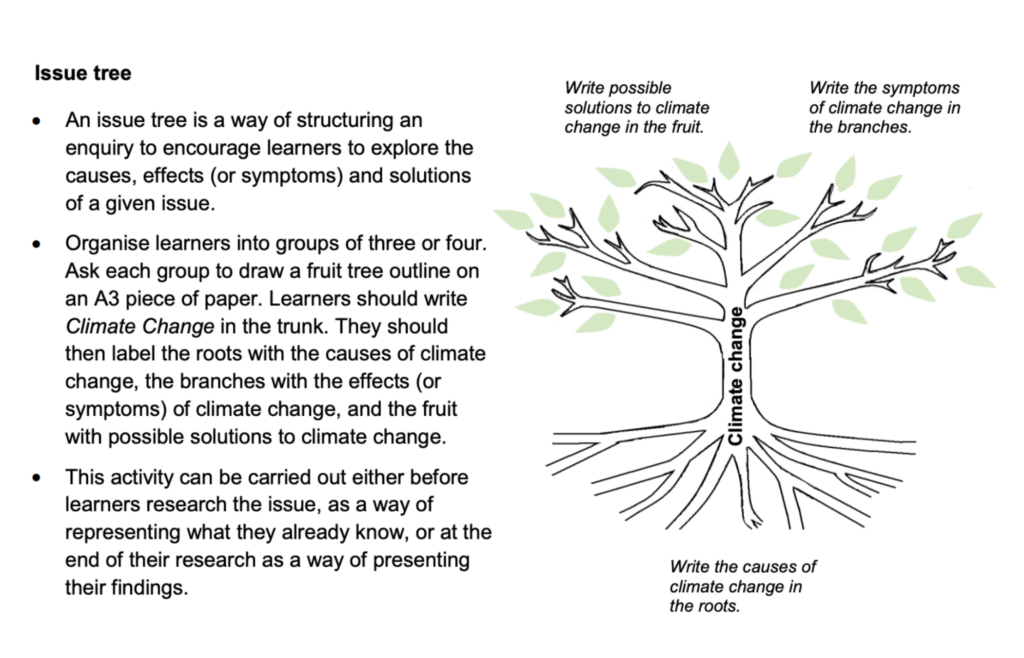

Write a Thank You Card to a Woman
Age: Grades 3-8
Objective: Encourage students to uplift the women around them by practicing their art and writing skills.
Directions: Ask students to create and decorate a thank-you card for a woman in their life. Allow students to design their own cards using arts and crafts supplies available (construction paper, colored tissue paper, markers, paints, etc.).

Source: https://www.waterford.org/resources/activities-to-celebrate-womens-history-month/
